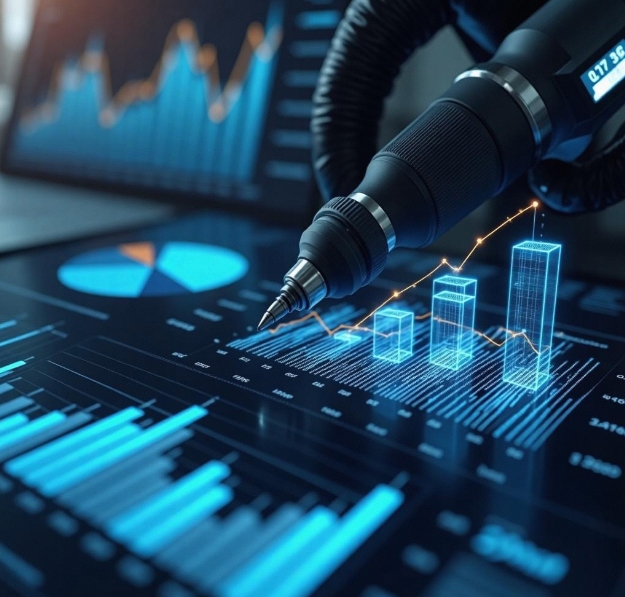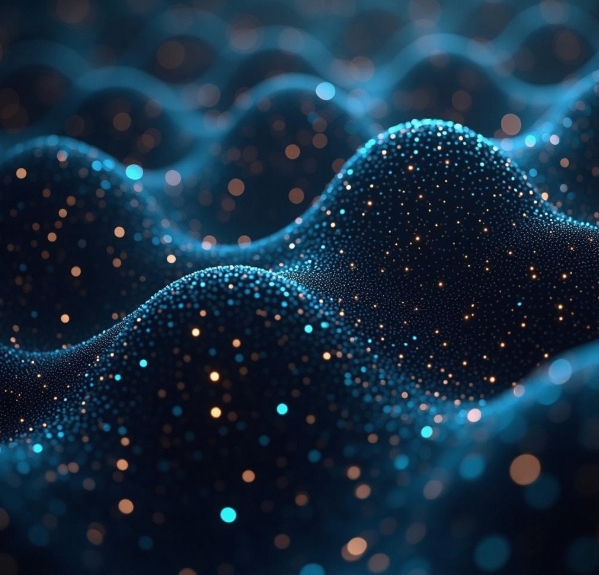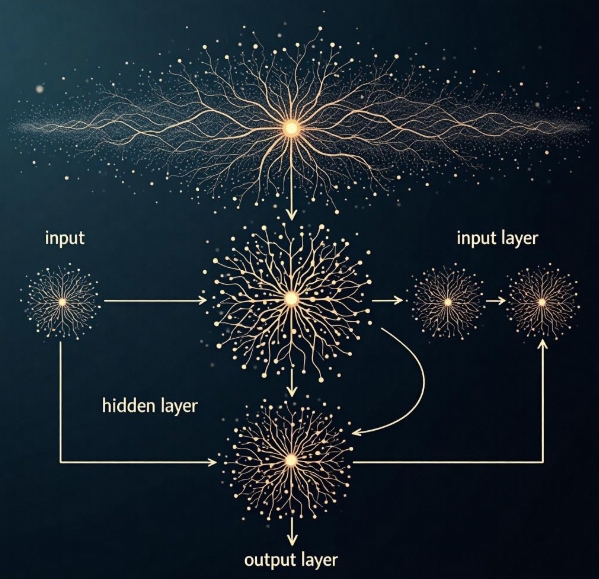Deep Learning and Neural Network Technologies in Artificial Intelligence
- latest articles
- 1.DApp Development & Customization: Merging Diverse Market Needs with User Experience 2.Analysis of the Core Technical System in DApp Project Development 3.How to achieve cross-chain interoperability in Web3 projects? 4.How does the tokenization of points reconstruct the e-commerce ecosystem? 5.How to Set and Track Data Metrics for a Points Mall? 6.What is DApp Development? Core Concepts and Technical Analysis 7.Inventory of commonly used Web3 development tools and usage tips 8.Development of a Distribution System Integrated with Social E-commerce 9.Six Key Steps for Businesses to Build a Points Mall System 10.What is DApp Development? A Comprehensive Guide from Concept to Implementation
- Popular Articles
- 1.Future Trends and Technology Predictions for APP Development in 2025 2.Analysis of the DeFi Ecosystem: How Developers Can Participate in Decentralized Finance Innovation 3.From Zero to One: How PI Mall Revolutionizes the Traditional E-commerce Model 4.DAPP Development | Best Practices for Professional Customization and Rapid Launch 5.Recommended by the Web3 developer community: the most noteworthy forums and resources 6.From Cloud Computing to Computing Power Leasing: Building a Flexible and Scalable Computing Resource Platform 7.How to Develop a Successful Douyin Mini Program: Technical Architecture and Best Practices 8.Shared Bike System APP: The Convenient Choice in the Era of Smart Travel 9.How to Create a Successful Dating App: From Needs Analysis to User Experience Design 10.From Design to Development: The Complete Process of Bringing an APP Idea to Life
Over the past few decades, artificial intelligence (AI) has experienced rapid development, particularly driven by deep learning and neural network technologies. AI has gradually evolved from handling simple tasks in its early stages to tackling more complex and challenging fields such as image recognition, speech recognition, autonomous driving, and natural language processing. This progress has not only transformed the technology industry but has also had a profound impact on various sectors. So, what are deep learning and neural networks, and how do they drive the development of artificial intelligence? This article will delve into deep learning and neural network technologies and explain their applications and prospects in AI.
I. Basic Concepts of Deep Learning and Neural Networks
1.1 Concept of Neural Networks
Neural Networks are computational models that simulate the structure of neurons in the human brain. They consist of a large number of nodes (or "neurons") connected in a specific way to form a network structure. Each neuron receives input signals, processes them through an activation function, and outputs signals to the next layer of neurons. This process mimics the mechanism of information transmission between neurons in the human brain.
Neural networks are divided into three layers: the input layer, hidden layer, and output layer. The input layer receives external information, the hidden layer processes and transmits information, and the output layer returns the final result. Each layer of the network is composed of many nodes, and the connections between these nodes have different weights. Neural networks adjust these weights through training to enable accurate responses to input information.
1.2 Concept of Deep Learning
Deep Learning is a subfield of machine learning that refers to the process of feature learning and data representation through multi-layer neural networks. The "depth" in deep learning comes from the hierarchical structure of multiple layers of neurons in the network. These multi-layer structures enable the model to perform layer-by-layer abstraction and feature extraction on input data, thereby handling more complex tasks.
Deep learning can be divided into two main categories: supervised learning and unsupervised learning. Supervised learning uses labeled training data for learning, while unsupervised learning attempts to extract useful information from unlabeled data. Deep learning is widely applied in fields such as speech recognition, image recognition, and natural language processing, achieving significant results.
II. Development History of Deep Learning and Neural Networks
2.1 Early Development of Neural Networks
The origins of neural networks can be traced back to the 1940s when psychologists and mathematicians proposed artificial neuron models to simulate the workings of the human brain. In 1958, American psychologist Frank Rosenblatt introduced the Perceptron model, the first neural network model capable of performing binary classification tasks. However, due to limitations in computational power and algorithmic shortcomings, neural networks experienced stagnation in the 1970s.
2.2 The Rise of Deep Learning
It was not until the early 21st century, with the improvement of computer performance and the accumulation of big data, that deep learning achieved breakthrough development. In 2006, Geoffrey Hinton and his team proposed the "Deep Belief Network" and successfully trained multi-layer neural networks, marking the beginning of deep learning.
With the enhancement of GPU (Graphics Processing Unit) computing power, the training speed of deep learning was greatly accelerated. In 2012, Hinton's team achieved remarkable results in the ImageNet competition using deep convolutional neural networks (CNNs), making deep learning the mainstream technology in the field of computer vision.
2.3 Various Variants of Neural Networks
With in-depth research, neural networks have continuously evolved, giving rise to many different variants and extensions. Common neural network models include:
Convolutional Neural Networks (CNNs): Primarily used for image recognition and processing, CNNs extract image features through convolutional layers and have made significant progress in tasks such as image classification and object detection.
Recurrent Neural Networks (RNNs): Excel at processing sequential data and are widely used in tasks such as speech recognition and natural language processing. Particularly, Long Short-Term Memory (LSTM) and Gated Recurrent Units (GRUs) enable RNNs to effectively address long-sequence dependency issues.
Generative Adversarial Networks (GANs): Composed of a generator and a discriminator, GANs generate realistic images, audio, etc., through adversarial training. GANs are widely applied in image generation, artistic creation, and other fields.
III. Technical Principles of Deep Learning and Neural Networks
3.1 Training and Optimization of Neural Networks
The training process of neural networks involves adjusting the connection weights between neurons through optimization algorithms so that the network can make accurate predictions on input data. During training, neural networks use large amounts of training data and labels, adjusting network weights through two phases: "forward propagation" and "backward propagation."
Forward Propagation: Input data propagates through the layers of the neural network, ultimately producing a prediction result.
Backward Propagation: By calculating the loss function (e.g., mean squared error, cross-entropy), the error is propagated back to each layer, and weights are updated using gradient descent to optimize the model.
3.2 Activation Functions and Loss Functions
Activation functions determine the output value of a neuron. Common activation functions include Sigmoid, ReLU (Rectified Linear Unit), and Tanh. The choice of activation function significantly impacts the performance and convergence speed of neural networks.
The loss function is the objective to be minimized during the optimization process of neural networks, measuring the difference between the network's output and the actual labels. Common loss functions include mean squared error and cross-entropy.
3.3 Regularization and Overfitting Prevention in Deep Learning
Deep learning models often have a large number of parameters, making them prone to overfitting. To avoid this, researchers have proposed various regularization techniques, including:
L1/L2 Regularization: Limits model complexity by adding penalty terms to the loss function.
Dropout: Randomly "drops" a portion of neurons during training to prevent the neural network from becoming overly reliant on specific neurons.
Data Augmentation: Increases data diversity by applying transformations such as rotation, flipping, and cropping to training data.
IV. Application Fields of Deep Learning and Neural Networks
4.1 Image Recognition and Processing
Deep learning has made significant progress in the field of image recognition and processing. Through convolutional neural networks (CNNs), computers can automatically extract features from large amounts of images for tasks such as classification, segmentation, and object detection. Companies like Google and Facebook have applied image recognition technology to scenarios such as facial recognition and automatic tag generation.
4.2 Speech Recognition and Natural Language Processing
Deep learning has also achieved breakthrough progress in the fields of speech recognition and natural language processing (NLP). Recurrent neural networks (RNNs), especially Long Short-Term Memory (LSTM) networks, are widely used for tasks such as speech-to-text and speech synthesis. In the NLP field, models like BERT and GPT have enabled machines to understand and generate natural language, widely applied in translation, question-answering systems, text generation, and other tasks.
4.3 Autonomous Driving
Autonomous driving technology relies on deep learning and neural networks, particularly in image recognition and decision-making systems. Through deep convolutional neural networks, autonomous vehicles can recognize road signs, pedestrians, traffic signals, and other information in real-time and make corresponding decisions.
4.4 Medical Field
The application of deep learning in the medical field is also becoming increasingly widespread. By analyzing medical images (such as CT and MRI), deep learning can assist doctors in diagnosing diseases and predicting patients' health risks. Additionally, gene data analysis based on deep learning provides new possibilities for the development of precision medicine.
V. Challenges and Future Prospects of Deep Learning and Neural Networks
Although deep learning and neural network technologies have achieved significant accomplishments, they still face some challenges and issues. For example, deep learning models typically require large amounts of labeled data for training, and the cost of acquiring and labeling such data is high. Additionally, deep neural network models have poor interpretability, making it difficult to understand their decision-making processes, which may pose risks in certain fields (such as healthcare and finance).
In the future, research on deep learning and neural networks will focus on the following directions:
Improving Model Interpretability: Researchers will strive to develop more transparent and interpretable deep learning models to increase their applicability in high-risk fields.
Few-Shot Learning: How to conduct effective training with limited labeled data remains a challenge in the field of deep learning. Few-shot learning and transfer learning will become research hotspots.
Multimodal Learning: Combining multiple sources of information such as images, text, and speech for joint learning to enhance the comprehensive performance of models.
Integration of Edge Computing and AI: With the rise of 5G and IoT technologies, the combination of deep learning and edge computing will bring more application scenarios to smart devices and automated systems.
Conclusion
The rapid development of deep learning and neural network technologies has brought unprecedented opportunities and challenges to artificial intelligence. Through continuous algorithm optimization and improved computational capabilities, deep learning is moving from the laboratory to production environments, driving transformations across various industries. Although some technical bottlenecks remain, with further research, artificial intelligence will demonstrate even broader application prospects in the future.
-

How does artificial intelligence technology transform the operational models of modern enterprises?
In the wave of the digital era, artificial intelligence (AI) technology has tran···
-

How to Utilize Artificial Intelligence for Precision Medicine and Health Management
With the rapid advancement of technology, artificial intelligence (AI) has demon···
-

Integration and Application of Artificial Intelligence and Robotics
In today's era of rapid technological advancement, the integration of artificial···

 Blockchain
Blockchain












